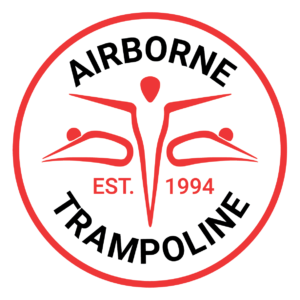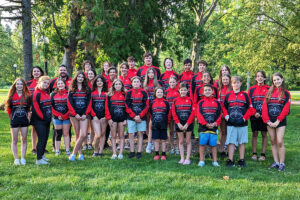Does Practice Make Perfect?
An Article by Airborne Trampoline
How many times have we heard our parents and coaches tell us that practice makes perfect (especially in Gymnastics and Trampoline)? If I had a nickel for every time, I’d have at least a dollar. But whilst their intention was to motivate us to do more work, the old adage lacks any true value. Practice is a good idea; through it we can gain conscious competence on skills and behaviours; we can become adept at doing what we practise. According to conventional wisdom, which is neither conventional nor wise most of the time, repetition is a good way to learn, and granted it can be, but here is the rub: if you do the same thing, one-hundred times, and you do it wrong, it will become a habit – habits (good or bad), as we know are hard to break.
I could quote numerous neuroscience papers that explain the correlation between good practice and good learning, or of the opposite with bad practice, but here I want to appeal to the experience of the coach and the athlete. If you’re an athlete think of that skill that you had been doing wrong for a while and you needed to correct, but despite your best efforts it proved almost impossible. Some of these skills take months to bring back to the desired execution. One example that comes to mind, because of how common it is, is the head position while flipping backwards. Now, if you’re a coach and are reading this gem of grammatical incompetence, think of that athlete who either by inheritance or self-instruction came to your class with a number of habitual errors of performance. In both these scenarios the solution is retrospectively good practice from the first time the skill was attempted. I could also provide information from many other sources that say over practicing can be detrimental to skill development, and I will do just that here, because I care about you, and so far you’ve enjoyed this article much more than you expected.
To understand why the quality of practice is more important than the quantity, we need to look a t a process called myelination.
According to Wikipedia myelin is an electrically insulating material that forms a layer, usually around the axon of a neuron. And it is essential for the proper functioning of the nervous system. The purpose of the myelin layer is to increase the speed at which impulses propagate along the myelinated fiber.
Neuroscience has shown that the process of myelination is the result of repeated neural activity, and that it increases the speed and strength electrical impulses; stronger myelin layers make these impulses jump to the required axon as opposed to the regular wave-like motion of weaker impulses.
Therefore, as I pretentiously toot my own horn whilst I give you more invaluable advice, remembered that practice will not make you perfect; it won’t even make you good at what you want to learn if you learn it wrong to begin with. Yes, you should always practise, and enough to achieve competence in your chosen field, but always remember to insist that your athletes repeat only what is right according to the expectations of the sport.
______________________________________
This article was crafted by Peyton Dracco, a Gymnastics Ontario/Canada & N.C.C.P. Certified Trampoline Coach at Airborne Trampoline Newmarket.
Follow Peyton Dracco on Twitter at @pdracco

For more information on Airborne’s Trampoline and Gymnastics Trampoline Programs, contact any Airborne location by jumping over to www.airbornetrampoline.ca
Airborne Trampoline
Check Out ALL of Airborne Trampoline’s Amazing Locations.
Airborne Trampoline North: Newmarket
Airborne Trampoline Club: Woodbridge
Airborne Trampoline Centre: Mississauga
Airborne Trampoline KW: Cambridge.
Airborne is a proud member of Gymnastics Ontario/Canada.

